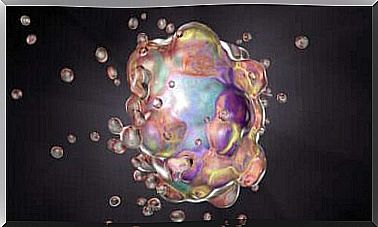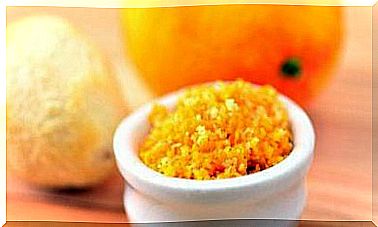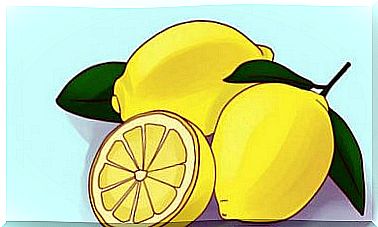Nutritional Values and Benefits Of Palm Heart
The palm heart or kernel is a soft, versatile, healthy and all-round delicious ingredient in a gourmet kitchen. This vegetable comes from palm trees growing in South America. From these countries, they are exported to different parts of the world. Palm heart, for example, is one of the favorite ingredients of French chefs.
After the harvest season, farmers remove the bark of the palm and the layers of fiber that surround a group of unopened, immature leaves or so-called palm kernels or palm kernels. The texture of this raw material is soft and the taste is mild.
According to Agronomía Mesoamericana, worldwide consumption of palm kernels is growing rapidly, so producers are now also marketing them in preserved form. According to the Bolivian Institute of Foreign Trade, France is the main importer of palm kernels worldwide, followed by the United States and Argentina.
Nutritional values of palm heart
Let’s look at the most important macro- and micronutrients in the palm heart. Canned products usually also contain water, salt and citric acid.
Macroelements
Palm palm is low in calories. It has no fat, but still a high water content. In addition, the palm heart is rich in fiber among indigestible carbohydrates, making it ideal for a weight management diet.
According to the food composition table, 100 grams of palm kernels contain the following nutrients:
- Calories: 36
- Proteins: 4%
- Fat: 0.06%
- Total carbohydrates: 3.6%
- Fiber: 3.57%
- Water: 91%
Minerals
The minerals provided by the palm heart can be found in the same food composition table. The table also shows how much the palm heart is covered by the recommended daily intake of these minerals per 100 grams.
- Copper: 70% of the recommended daily intake
- Potassium: 38%
- Zinc: 36%
- Phosphorus: 20%
- Sodium: 357 milligrams per 100 grams of canned palm heart
The most important mineral in this food is therefore copper, which covers 70% of the proposed daily intake. Potassium and zinc are in good proportions, more than 30% of the recommended intake. The high sodium content is due to the salt used as a preservative.
According to the International Plant Nutrition Institute, the vitamin content of the palm heart is affected by the temperature to which it is exposed during processing.
The benefits of palm heart in the diet
The nutritional profile of the palm heart makes it excellent in the fight against various diseases, let’s look at its benefits.
Palm Heart is perfect for a low calorie diet
Some experts relate to the total number of calories in weight management. The low amount of fat and energy that palm hearts provide make them perfect for low calorie diets. A 100 gram serving contains only 36 calories. Therefore, it is an excellent substitute for high-calorie raw materials such as cereals, potatoes and roots.
In addition, there is evidence that the dietary fiber and water of this vegetable bind and contribute positively to low energy intake. According to the food pyramid, almost 100% of the carbohydrate in palm hearts is fiber and 90% water. In other words, it fills with swelling in the stomach.
The palm heart is a source of important nutrients
The palm heart contains a number of minerals important for the functioning of the body, such as copper, potassium, zinc and phosphorus.
For example, the U.S. National Medical Library declares that copper helps in the absorption of iron and the formation of red blood cells. In addition, copper keeps blood vessels, bones, nerves and the immune system healthy.
Some studies also point out that a deficiency of this mineral can lead to ischemic heart disease.
The scientific review states that zinc is not just involved in cell division, wound healing, and immune function. Its deficiency can also affect growth and development during pregnancy and lactation. In addition, a deficiency condition can increase the risk of infection (diarrhea and pneumonia).
Advances in Nutrition explains the importance of phosphorus as it promotes dental and bone health and is involved in the production of tissue repair proteins.
Hypertension magazine also combines potassium with the prevention and treatment of high blood pressure. A large amount of this mineral is found in the palm heart.
Antioxidant capacity
Pharmaceutical experts from Brazil found large amounts of polyphenols with excellent antioxidant activity in palm hearts. Some sources describe that antioxidants neutralize free radicals that produce oxidative damage at the cellular level.
Heim and other researchers point out that the antioxidant capacity of polyphenols can be used as a therapeutic and preventive nutritional strategy against aging as well as certain diseases. The magazine Alimentación, Nutrición y Salud also announces the positive effect of polyphenols in the treatment of cardiovascular diseases, neurodegenerative disorders and diabetes.
How to make palm kernels
You can find palm kernels packaged or fresh. The palm heart can be used for salads, seafood, sauces, grilled, seasoned appetizers, or you can even eat them on their own.
People use them as a meat substitute in a vegan and vegetarian diet. Keep in mind, however, that palm hearts just resemble meat in terms of texture and aren’t actually protein-rich foods. The palm heart can be eaten with fish sticks or even as part of a vegan dish.
Three simple recipes
- Palm heart tip. First, chop the hearts finely and add the garlic as well as the lemon zest. Mix everything with the olive oil and add the pepper to taste.
- Palm heart with avocado. Combine chopped palm kernels with avocado and add to salad.
- Vegan crab from palm hearts. Shred the palm hearts until they resemble crab meat. Then season with vegan mayonnaise and Dijon mustard. It’s as simple as delicious.
The versatility of the palm heart
In short, palm kernels are tasty vegetables that are full of minerals as well as antioxidants. They offer many health benefits. In addition, they are ideal for weight management. They have a low caloric content and a high fiber content.
Every kitchen should have this versatile ingredient. Due to its texture, it can be used as a substitute for fish and shellfish in the vegetarian diet.









